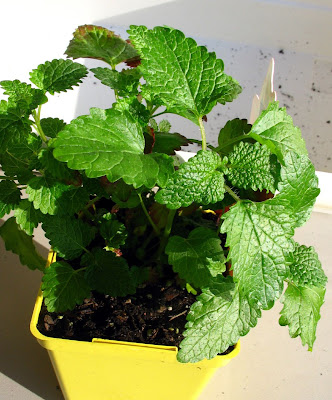There are hundreds of remarkably common herbs, flowers, berries and plants that serve all
kinds of important health purposes like anti-inflammatory, anti-fungal, insect repellent, antiseptic, antibacterial, detoxification, fever reduction and pain relief.
So here is a list of plants that have the highest medicinal value compared to the other million species around the world worth planting around the house.
Basil is most commonly used fresh in cooked recipes. In general, it is added at the last moment, as cooking quickly destroys the flavor. But It has the power to treat:
Peppermint generally grows best in moist, shaded locations, and expands by underground rhizomes. Young shoots are taken from old stocks and dibbled into the ground about 1.5 feet apart.
 Well known as a remedy for skin problems, the deep-orange flowered pot marigold variety is applied externally to:
Well known as a remedy for skin problems, the deep-orange flowered pot marigold variety is applied externally to:



#10. Milk Thistle:
It grows 30 to 200 cm tall, having an overall conical shape with an approx. 160 cm max. diameter base. The stem is grooved and more or less cottony. With the largest specimens, the stem is hollow.
kinds of important health purposes like anti-inflammatory, anti-fungal, insect repellent, antiseptic, antibacterial, detoxification, fever reduction and pain relief.
So here is a list of plants that have the highest medicinal value compared to the other million species around the world worth planting around the house.
#1. Basil:
- Cuts
- Lack of appetite
- Stomach gas
- scrapes
#2. Ginseng:
It has a wide range of health benefits, mostly as a powerful tonic herb that maintains good health. Its medicinal properties are used for:
- Insomnia
- poor appetite
- increasing endurance
- memory improvement
- anti-inflammatory purposes
- immunogenic purposes
- chemoprotective purposes
- radiological protection
#3. Peppermint:
Peppermint generally grows best in moist, shaded locations, and expands by underground rhizomes. Young shoots are taken from old stocks and dibbled into the ground about 1.5 feet apart.
It has various uses some of them are:
- Reduce irritable bowel syndrome
- against upset stomachs
- inhibit bacterial growth
- treat fevers
- flatulence
- spastic colon.
Aloe vera is a stemless or very short-stemmed succulent plant growing to 60–100 cm (24–39 in) tall, spreading by offsets. The leaves are thick and fleshy, green to grey-green, with some varieties showing white flecks on their upper and lower stem surfaces.
The big leaves contain sap, which works amazingly against:
- Burns
- Wounds and cuts
- Eczema
- Skin allergies
The intake of aloe vera juice can heal:
- digestive problems and appetite
- Chronic constipation
- ulcerative colitis
#5. Pot Marigold:
Pot Marigold is widely cultivated and can be grown easily in sunny locations in most kinds of soils. Although perennial, it is commonly treated as an annual, particularly in colder regions where its winter survival is poor and in hot summer locations where it also does not survive.
- Bites
- stings
- sprains
- wounds
- sore eyes
- varicose veins
#6. Fenugreek seeds:
Fenugreek is used as a herb (dried or fresh leaves), spice (seeds), and vegetable (fresh leaves, sprouts, and microgreens). Sotolon is the chemical responsible for fenugreek's distinctive sweet smell.
These are very nourishing and carry great nutritional value – they can treat:
- Labor pain
- Inflammations
- Digestion issues
- Drain ducts
- Diabetes (initial)
- Blood cholesterol levels (low)
- Refresh breathe
#7. Great Burdock:
Greater Burdock is a biennial plant, rather tall, reaching as much as 9 feet (2.7 m). It has large, alternating, cordiform leaves that have a long petiole and are pubescent on the underside.
The root is is used to treat ‘toxic overload’ that result in throat infections and skin diseases like:
- Boils
- rashes
- burns
- bruises
- herpes
- eczema
- acne
#8. Lemon Balm:
Lemon balm grows in clumps and spreads vegetatively, as well as by seed. In mild temperate zones, the stems of the plant die off at the start of the winter, but shoot up again in spring.
Lemon balm grows in clumps and spreads vegetatively, as well as by seed. In mild temperate zones, the stems of the plant die off at the start of the winter, but shoot up again in spring.

The crushed leaves, when rubbed on the skin, are used as:
- mosquito repellent
- herpes
- sores
- gout
- insect bites
#9. Comfrey:
Comfrey is a perennial herb of the family Boraginaceae with a black, turnip-like root and large, hairy broad leaves that bears small bell-shaped flowers of various colours, typically cream or purplish, which may be striped.
Comfrey is a perennial herb of the family Boraginaceae with a black, turnip-like root and large, hairy broad leaves that bears small bell-shaped flowers of various colours, typically cream or purplish, which may be striped.
It contains allantoin, which helps in a replacement of body cells naturally. In addition, it can treat:
- bronchial issues
- broken bones (weak bones)
- arthritis
- severe burns
- cuts and acne
- sprains
- ulcer
#10. Milk Thistle:
It grows 30 to 200 cm tall, having an overall conical shape with an approx. 160 cm max. diameter base. The stem is grooved and more or less cottony. With the largest specimens, the stem is hollow.


















0 comments:
Post a Comment